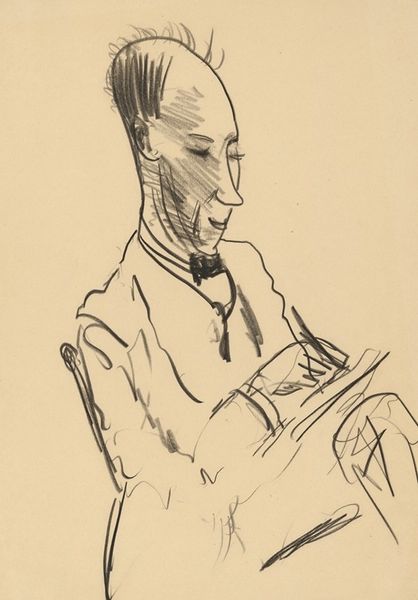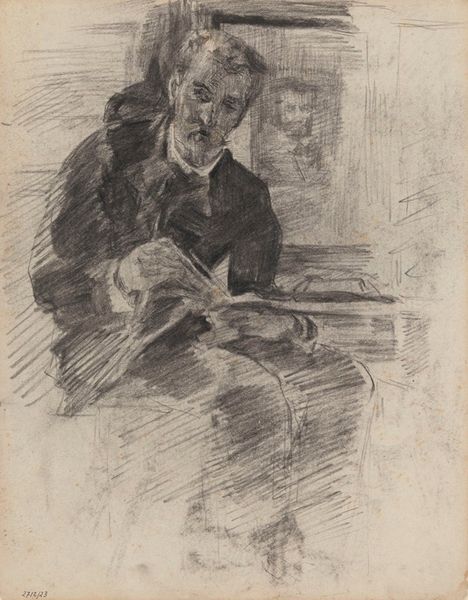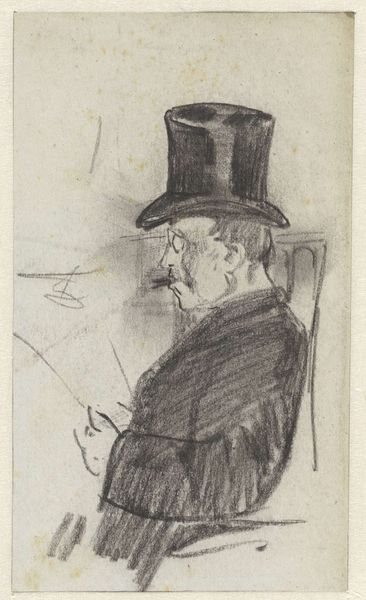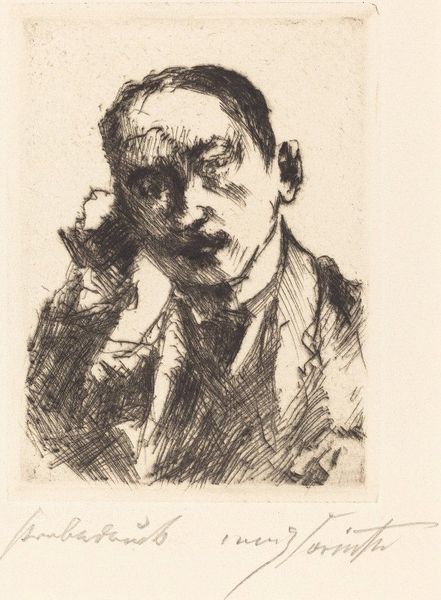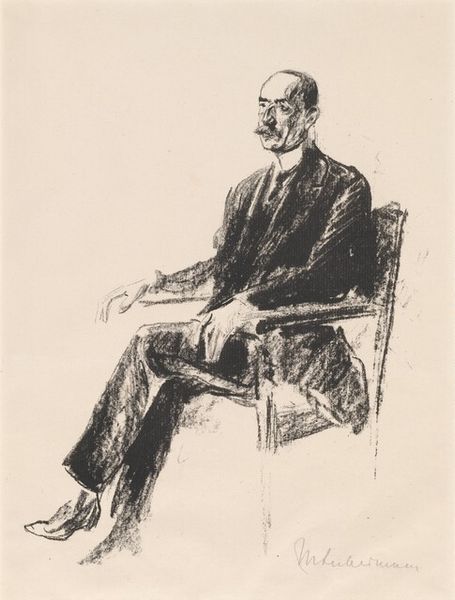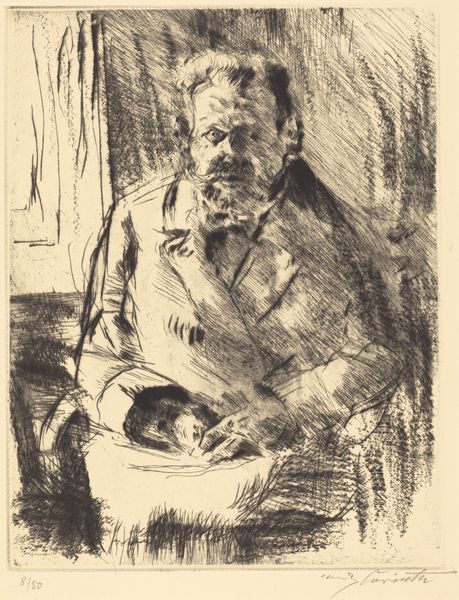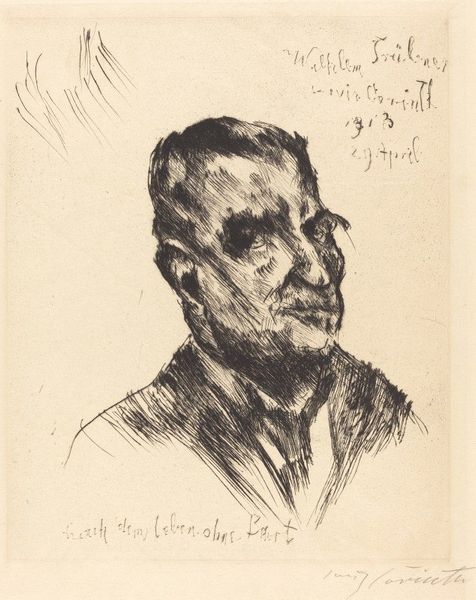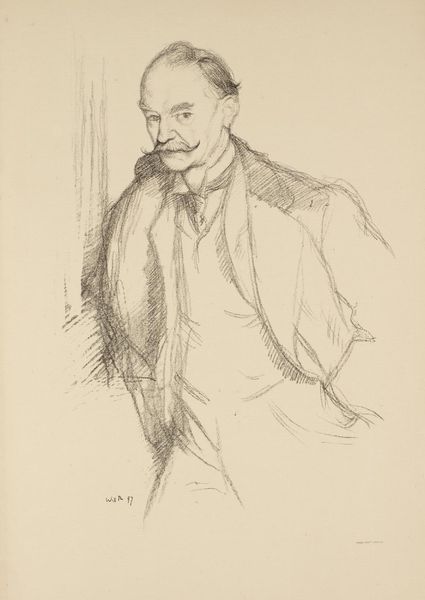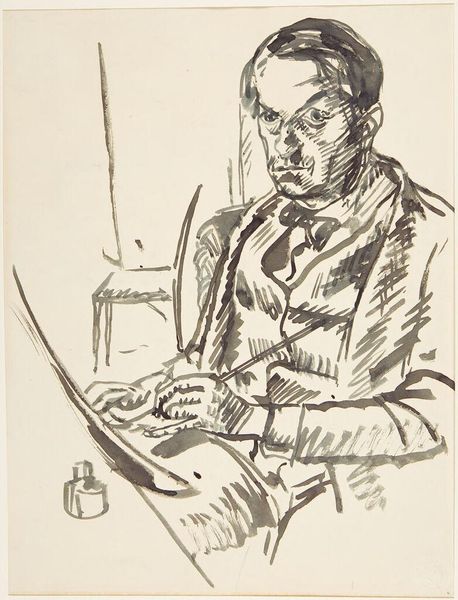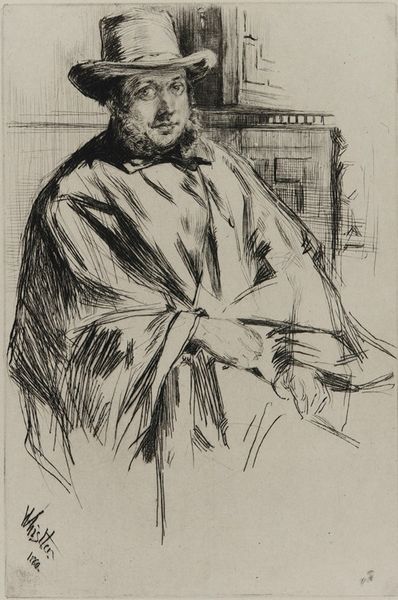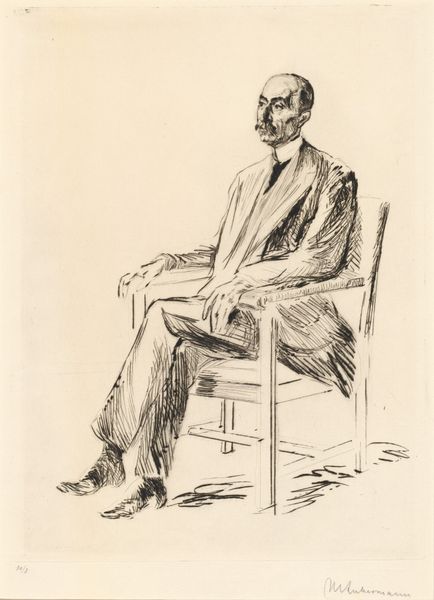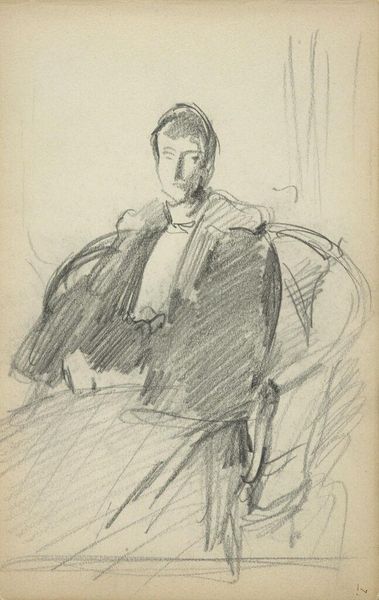
drawing, graphite
#
portrait
#
drawing
#
expressionism
#
graphite
Copyright: Public Domain: Artvee
Editor: This is Lovis Corinth’s 1919 graphite drawing, "Count Keyserling." It’s a striking portrait. The loose lines create a sense of unease, a nervousness, almost. How do you interpret this work, especially considering its historical context? Curator: It’s crucial to remember that this was drawn shortly after the First World War. Corinth's expressionistic style here perfectly captures the psychological landscape of the Weimar Republic: fractured, anxious, and searching for new forms of expression amidst societal upheaval. It portrays more than just Keyserling's likeness. Editor: So you see the stylistic choices as reflecting broader anxieties? Curator: Absolutely. The portrait is imbued with that sense of post-war trauma and uncertainty that was felt politically, socially and even at cultural institutions. The frantic mark-making perhaps mirroring the chaotic societal climate. How do you read Keyserling's posture in the drawing? Editor: He seems to be posed, but he doesn't look relaxed. There's tension in his hands, his gaze isn't direct… it gives a sense of him trying to present something but not entirely succeeding. Curator: Exactly! Corinth uses the individual, Keyserling, as a microcosm to represent this period's struggle for self-definition amidst disillusionment. It's less a celebration of aristocracy and more an interrogation of its place in a changing world. He shows him caught between worlds: traditional and modern. Editor: It's fascinating how a seemingly straightforward portrait can reveal so much about a particular time period and the broader social forces at play. Curator: Precisely, by considering the cultural, social and political moment in which art is produced, a portrait goes beyond simply representing an individual, but reflects history itself. Editor: Thanks so much! I'll never look at portraiture in the same way.
Comments
No comments
Be the first to comment and join the conversation on the ultimate creative platform.
